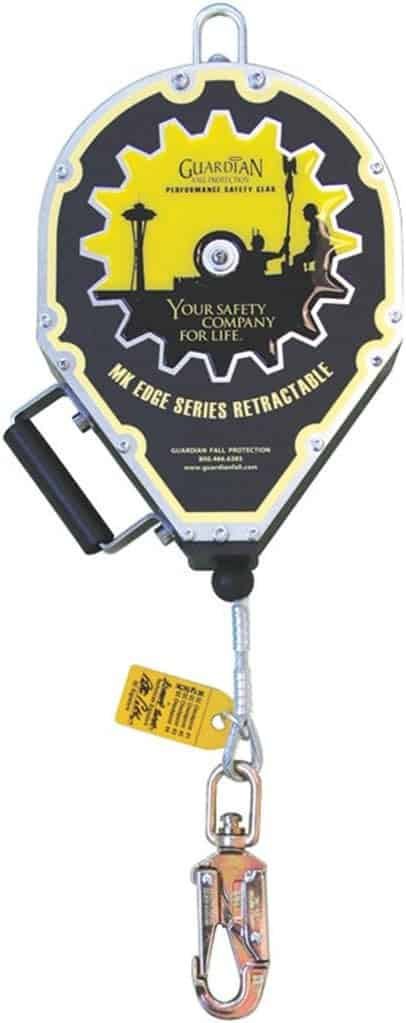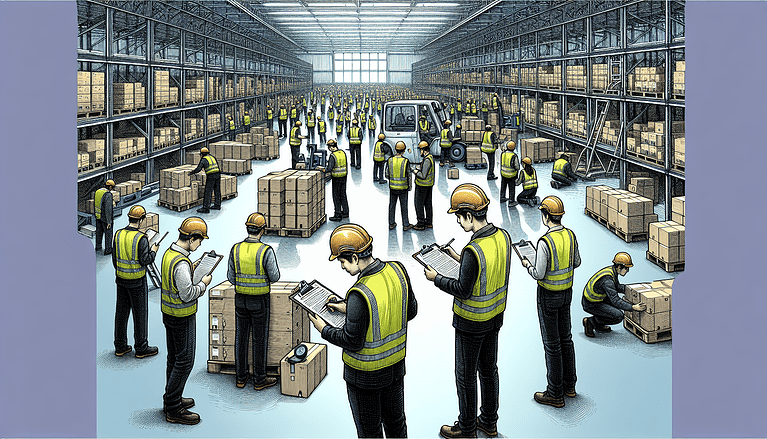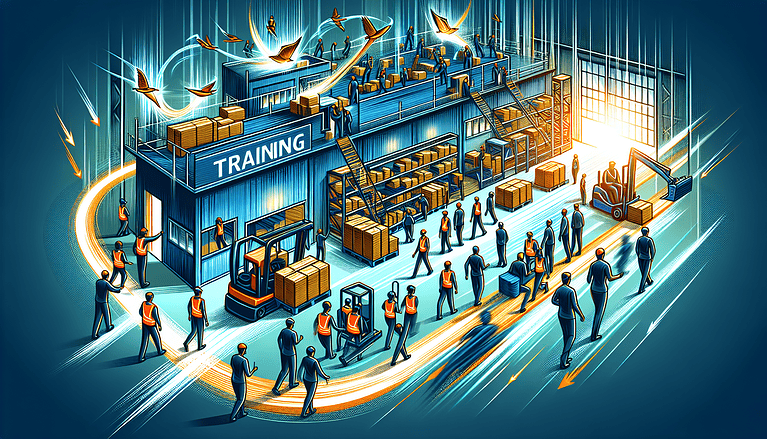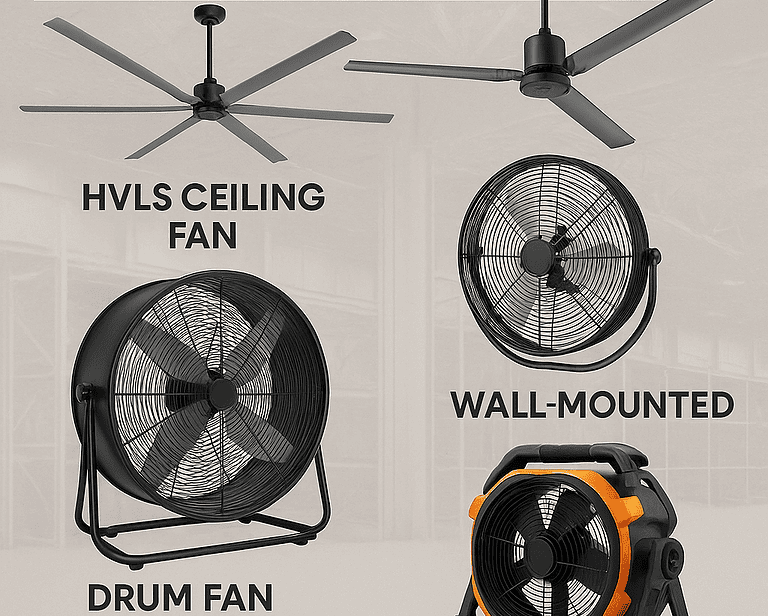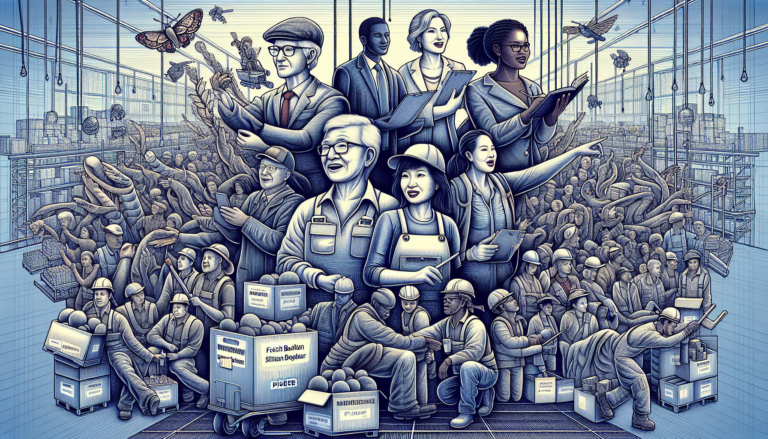Personal Fall Arrest System: 5 Ways They Keep You Safe
Many warehouses require workers to operate at heights, including storage racking, pick modules, and catwalks. While fall protection measures like safety nets and lanyards are ideal, there are situations where a personal fall arrest system (PFAS) becomes essential for employee fall protection.
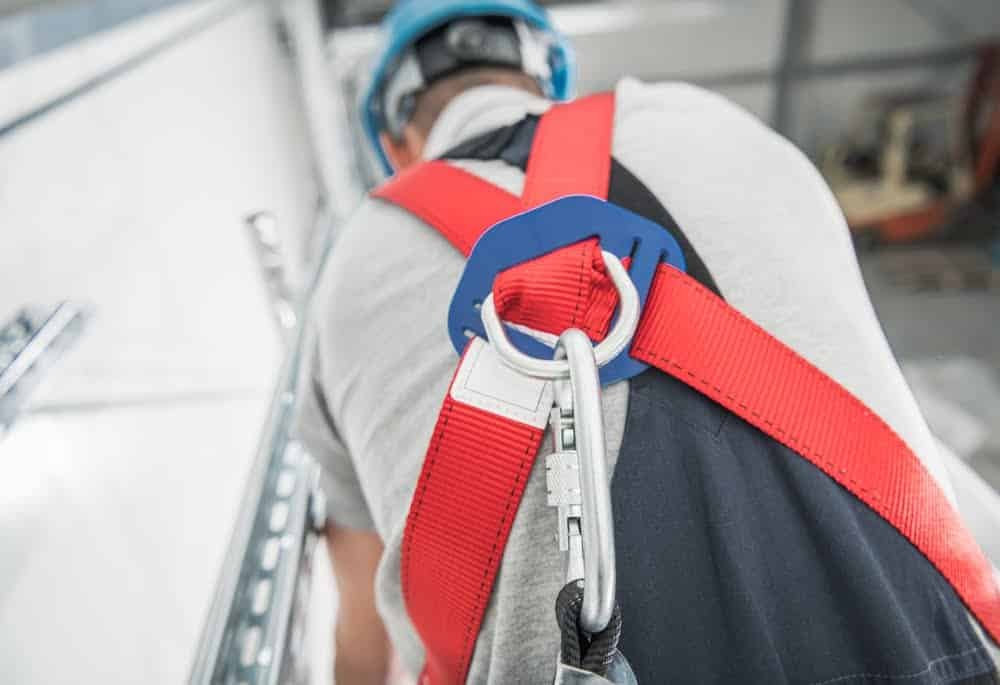
Personal Fall Arrest Systems: How They Stop Falls
In the busy world of warehouses, workers often have to climb up high on storage shelves, work on platforms, or cross over walkways above the ground.
While having safety nets and strong lanyards is good, sometimes you need something stronger, like a personal fall arrest system (PFAS), to keep you safe.
A personal fall arrest system is super important when preventing falls. While using a body harness, these systems catch you if you fall, reducing the chance of getting hurt from a high place.
They’re especially important in jobs where the chance of falling is high. With rules set by OSHA (the big bosses of workplace safety), these systems have to be used when there’s a danger of falling more than six feet.
Having the right fall protection is like having the right gear for a tough game. The PFAS is your best teammate—it’s got your back. It includes a solid harness that wraps around your body and connects to a strong anchor point with a special link.
This is similar to a lanyard or carabiner, which can hold much weight. Some lanyards even have shock absorbers to soften the blow if you fall, which is highly recommended. The system is designed to handle a maximum arresting force to ensure safety.
Choosing the right PFAS means looking at the work you do, how high you have to climb, and what kind of safety spots are available to tie off to. It’s also about making sure you can move around enough to do your job well, without tripping over your safety gear.
Every time before you use a PFAS, you gotta check it out to make sure it’s not damaged or worn out. You have to know how to put it on right, so it can really do its job if you fall. And just like any gear, it gets old and might need to be swapped out for new stuff to make sure you stay safe.
In the end, a personal fall arrest system is your last line of defense. It’s the thing that’s going to stop you from hitting the ground hard if you fall. By knowing how and when to use it, you’re making your workplace a lot safer for everyone.
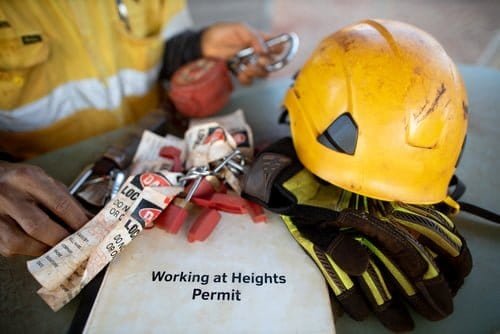
Understanding Free Fall Distance
Fall distance is a critical factor in the effectiveness of personal fall arrest systems. It refers to the vertical space a person could travel during a fall before the fall arrest system begins to slow them down. An effective system must limit the distance an employee free-falls to reduce the risk of injury.
Understanding and minimizing free fall distance is essential. A well-designed PFAS will have minimal fall distance, ensuring that if a worker slips or trips at height, the system will catch them swiftly, greatly reducing the risk of serious injury.
The recommended fall distance in a personal fall arrest system should be as short as possible. OSHA (Occupational Safety and Health Administration) sets the standard maximum fall distance at 6 feet (1.83 meters).
However, the actual fall distance should consider the total fall distance, including the length of the lanyard or deceleration device, any additional slack in the system, the worker’s height, and the distance needed to arrest the fall (deceleration distance) safely.
The criteria for personal fall arrest systems also include specifications for the maximum deceleration distance to ensure safety.
Fall Protection Regulations and Standards
The Occupational Safety and Health Administration (OSHA) has strict fall protection regulations outlined in 29 CFR 1926.502. These regulations mandate the use of fall protection systems whenever a worker faces a potential fall hazard of more than six feet.
Employers are responsible for ensuring fall protection equipment meets the relevant safety standards established by organizations like the American National Standards Institute (ANSI).
What is a Personal Fall Arrest System (PFAS)?
A personal fall arrest system (PFAS) is a last line of defense designed to arrest a fall and minimize the force of impact on the worker’s body. A properly used PFAS can help prevent serious injuries or even death in the event of a fall.
The Key Components of a PFAS
A basic PFAS typically consists of the following elements:
- Full body harness: This distributes the fall arrest forces evenly across the worker’s shoulders, thighs, and waist, minimizing the risk of suspension trauma.
- Anchorage point: A secure and structurally sound attachment point for the PFAS. Anchorages can be permanent or temporary.
- Connector: A link between the body harness and the anchorage point, such as a lanyard, detachable carabiner, or lifeline. Connectors should be rated for a specific weight capacity.
- Shock-absorbing lanyard: A lanyard integrated with a shock absorber that reduces the deceleration force experienced by the worker during a fall to a safe level.
Choosing the Right PFAS for the Job
Different work environments and tasks require specific PFAS configurations. Factors to consider when choosing a PFAS include:
- The maximum fall distance
- Worker mobility requirements
- The type of anchorage point available
- Environmental conditions
Consulting with a safety professional is recommended to ensure you select a PFAS that meets OSHA regulations and is suitable for the specific application.
Safe Use of Personal Fall Arrest Systems
Pre-Use Inspections and Safety Checks
Before each use, a thorough inspection of the PFAS is crucial to identify any damage or defects that could compromise its effectiveness in a fall situation. Workers should be trained to inspect their PFAS daily, focusing on stitching, webbing, buckles, connectors, and lanyards for signs of wear and tear.
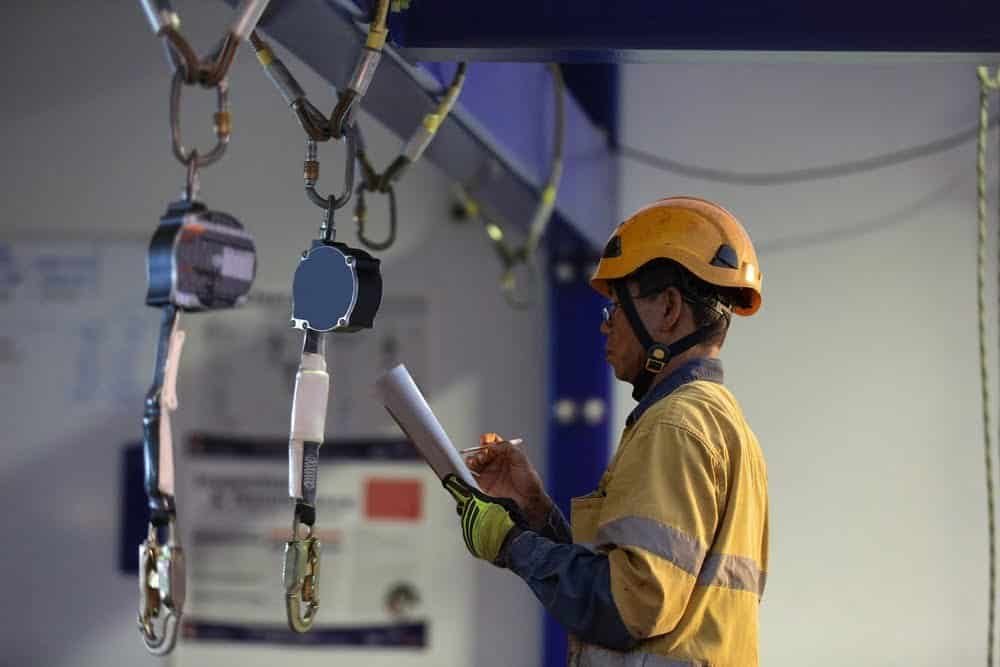
Proper Donning and Doffing of PFAS Equipment
Properly donning and doffing (putting on and removing) PFAS equipment is essential for safety. Workers should be trained to wear a full body harness and ensure all buckles and straps are secure before starting work at height.
Fall Arrest System Maintenance and Replacement
PFAS components are subject to wear and tear over time and may need to be replaced or retired based on manufacturer recommendations and usage conditions. Employers should have a system for regular inspection, maintenance, and replacement of PFAS equipment to ensure worker safety.
Areas to Ensure Compliance
Here’s a breakdown of some warehouse scenarios where a PFAS can safeguard workers:
Maintaining Warehouse Rooftops and Skylights
Warehouse roofs often require routine maintenance or cleaning. When safety nets or guardrails are impractical, a PFAS with a properly anchored lifeline can protect workers from falls while inspecting, repairing, or replacing skylights or other rooftop features.
Working at Heights on Order Picking Modules
Modern warehouses often utilize multi-level picking modules to maximize storage space. When retrieving or placing inventory in high-shelf locations, a properly secured PFAS can prevent falls if a worker loses balance or encounters an unexpected snag.
However, ensuring that the picking module’s design can accommodate an arrest system and that workers are trained on safe work practices while tethered to a PFAS is crucial.
Operating Forklifts at Elevated Heights
While forklifts come equipped with operator cages, there are situations where a PFAS offers an additional layer of safety. For instance, during maintenance or repairs conducted at significant heights while inside the raised forklift carriage, a PFAS tethered to a secure point within the carriage can provide secondary fall protection.
Transferring Inventory Between Mezzanines
Mezzanines create additional storage space within a warehouse, but access can involve ladders or staircases. If a worker needs to move inventory between mezzanine levels and a misstep could result in a fall, a PFAS with a suitable anchorage point on the mezzanine can provide essential protection.
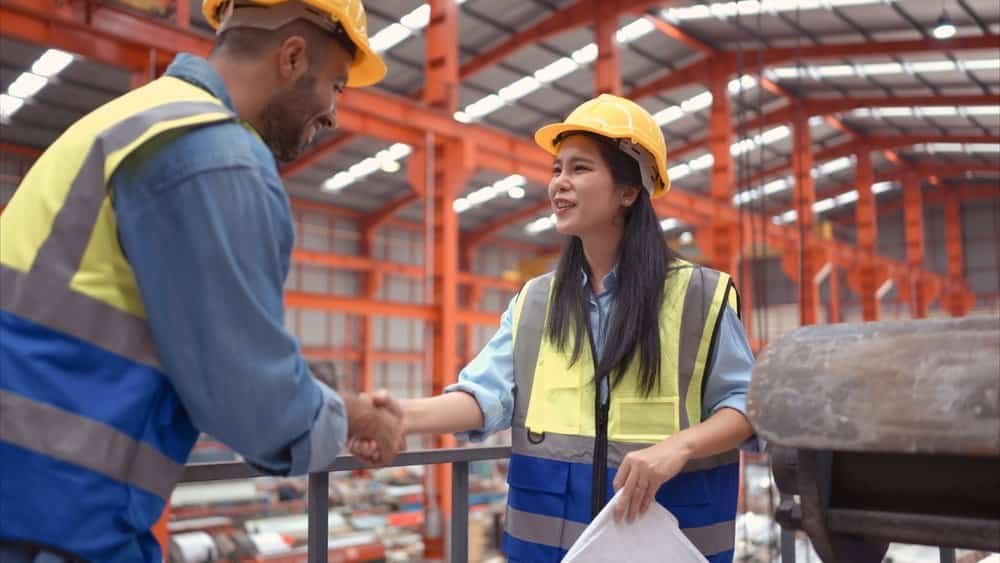
Personal Experiences
Here are a few personal examples of why fall protection is critical. Often times these preventable accidents take place in areas you wouldn’t think about.
Conveyor Jams
Conveyor systems run through pick modules and often weave in and out of platform-supported areas. Ladders are often used to remove jams and keep the product flow going. In one instance, an associate was using a ladder to reach a conveyor about 8′ tall.
The near miss was amplified when the ladder was moved from inside the conveyor to one on the opposite side, adjacent to the edge of the third-level pick module. The associate relocated the ladder, climbed the ladder, quickly fixed the jam, and lost his balance, almost falling three stories.
The lesson here is if you use a ladder to clear jams on a mezzanine, make sure you chain that ladder to a specific place so that it cannot be moved to a non-safe location. This incident gripped me so hard that I immediately hugged the associate. Whew!
Pallet Flow Positions
Most warehouses have pallet flow modules with case or single-unit picks out of these locations. This system works well to improve replenishment costs. However, problems arise when a pallet gets jammed on the pallet flow rollers or when an associate tries to reach the product on the back half of the pallet.
To complicate matters, oftentimes, only the first pallet position is supported with grading underneath, leaving additional positions without any support. One final challenge is the space left open between the pallet positions and the racking, where a small gap exists.
Without being overly dramatic, I’ve witnessed an associate step on this grading to retrieve a product, lose their balance, and fall through the pick module onto the ground.
The lesson here is this: If you have a pick module with a non-guarded opening, with or without a pallet, with or without grading, you must install a fall protection system.
In these instances, I recommend a ‘zipline’ running from one end of the module to the other and having the associate wear a harness and ‘clip into’ the zipline wearing a fall-resistant tether. The image below represents the concept.

Conclusion: Prioritizing Safety When Working at Heights
Working at heights is an inherent risk in many industries. However, employers can significantly mitigate these risks by implementing fall protection measures and providing workers with proper training on the safe use and limitations of PFAS.
This includes regular inspections to ensure equipment integrity, replacement of damaged components, and emergency rescue procedures in case of a fall.
By prioritizing a culture of safety and equipping workers with the knowledge and tools they need, warehouse operations can minimize the risk of fall injuries and create a safer work environment for everyone.

